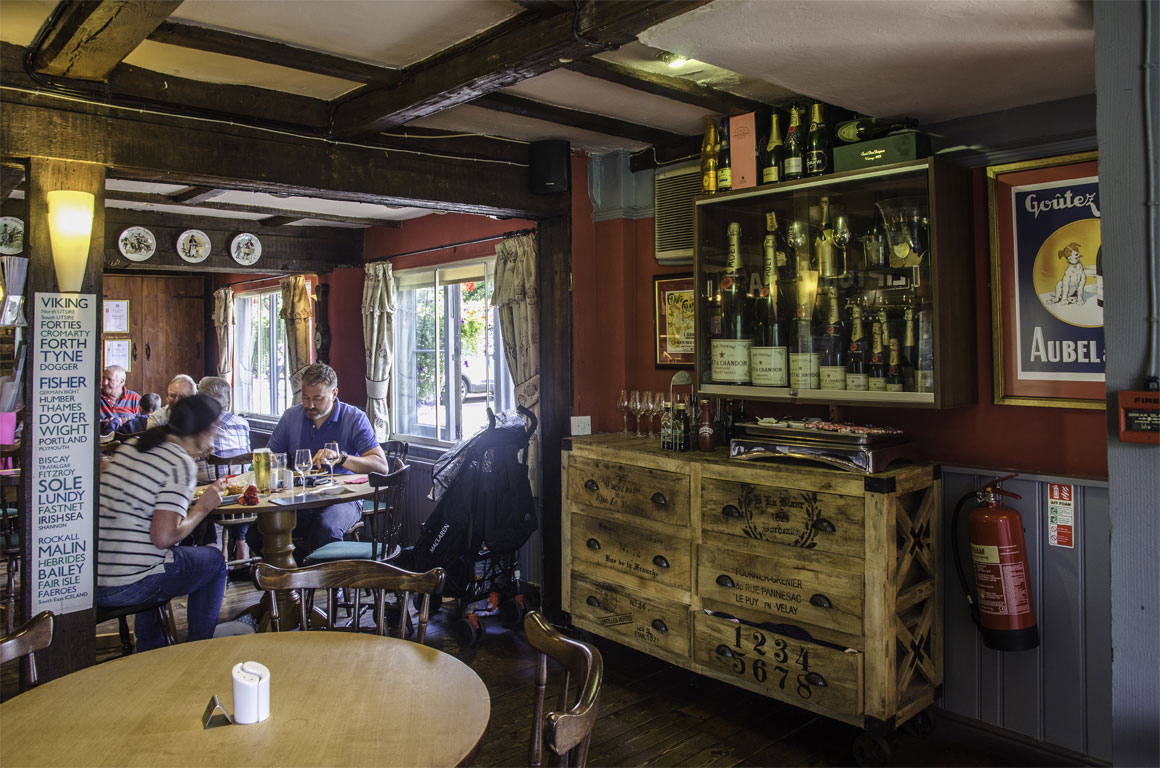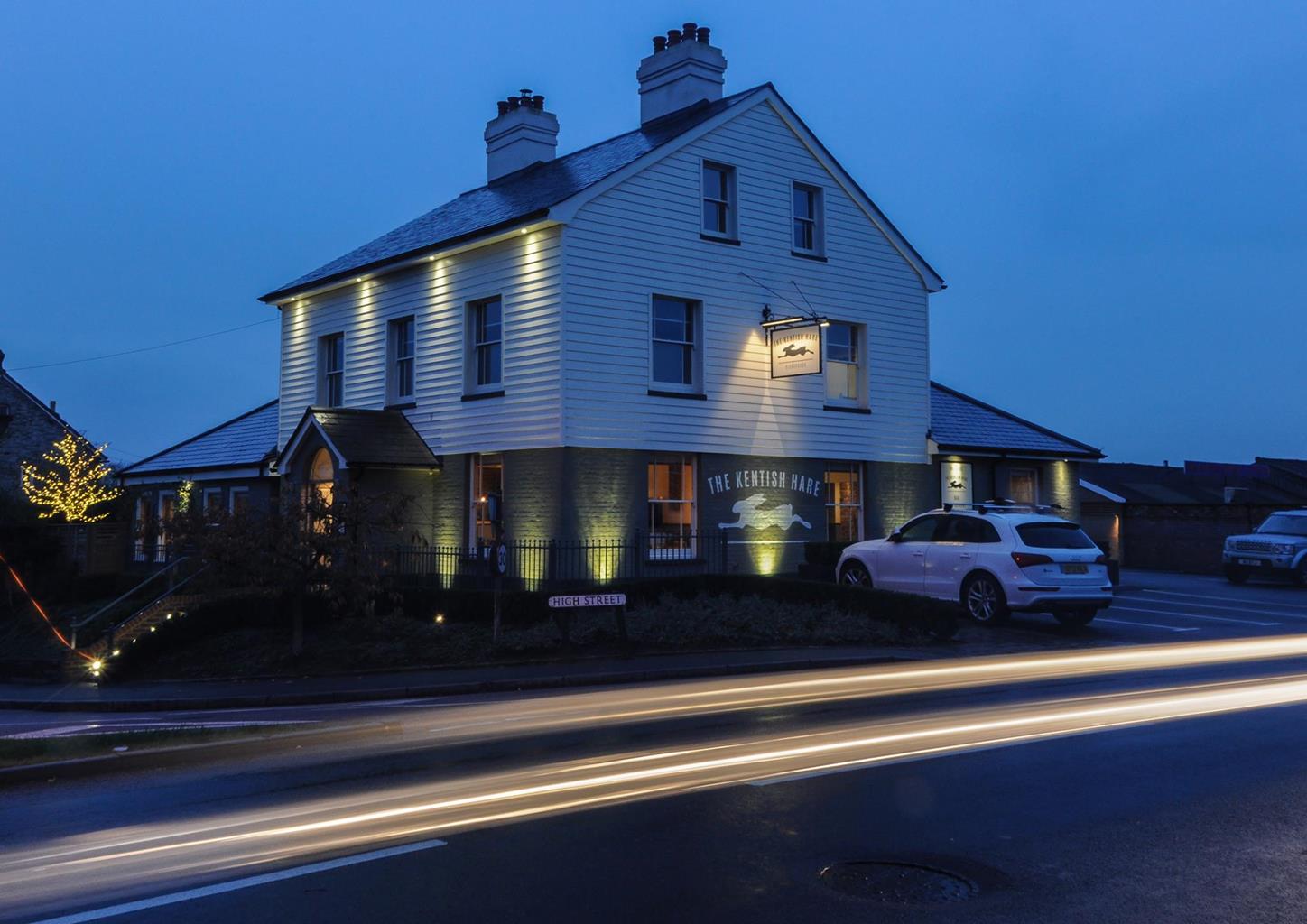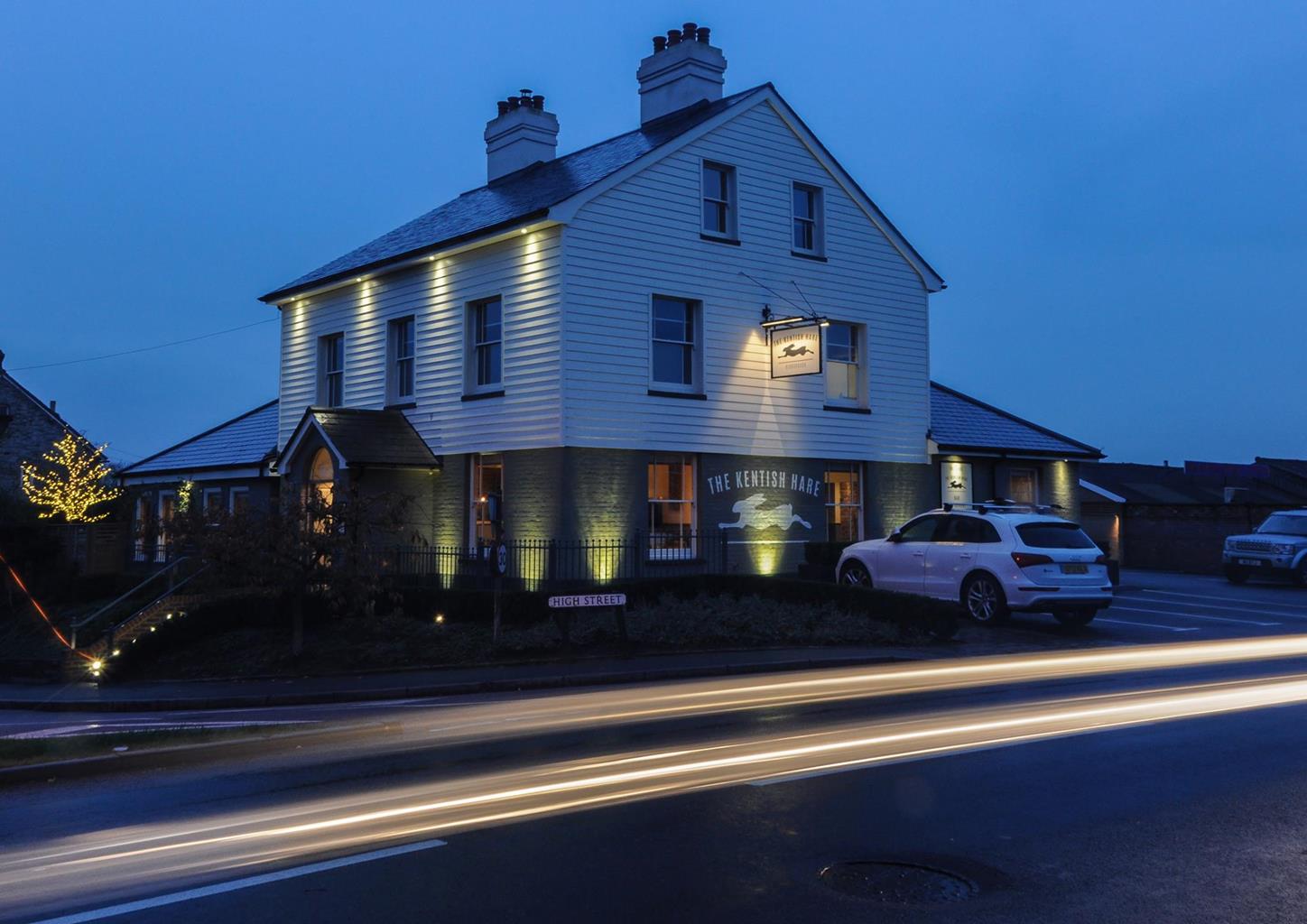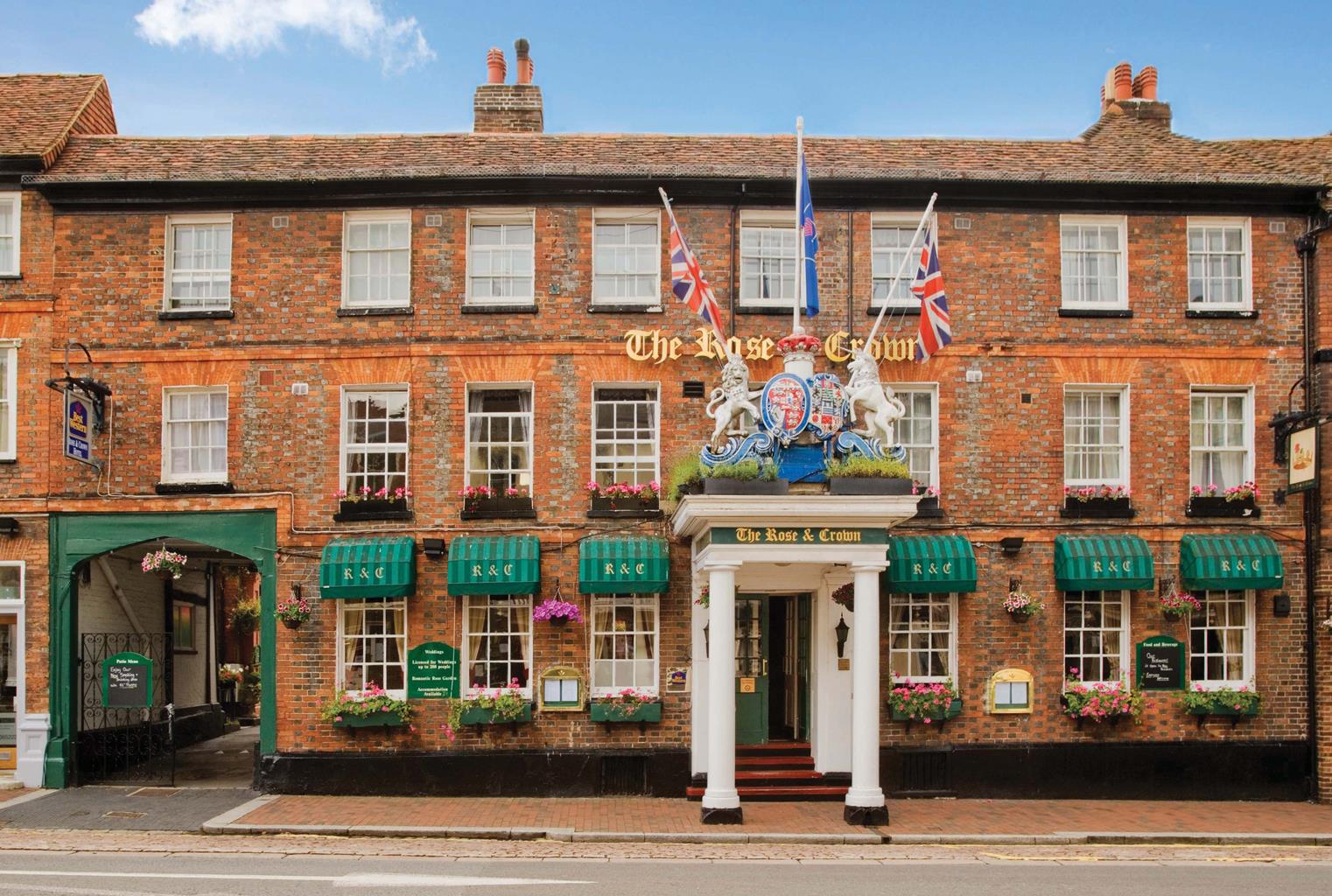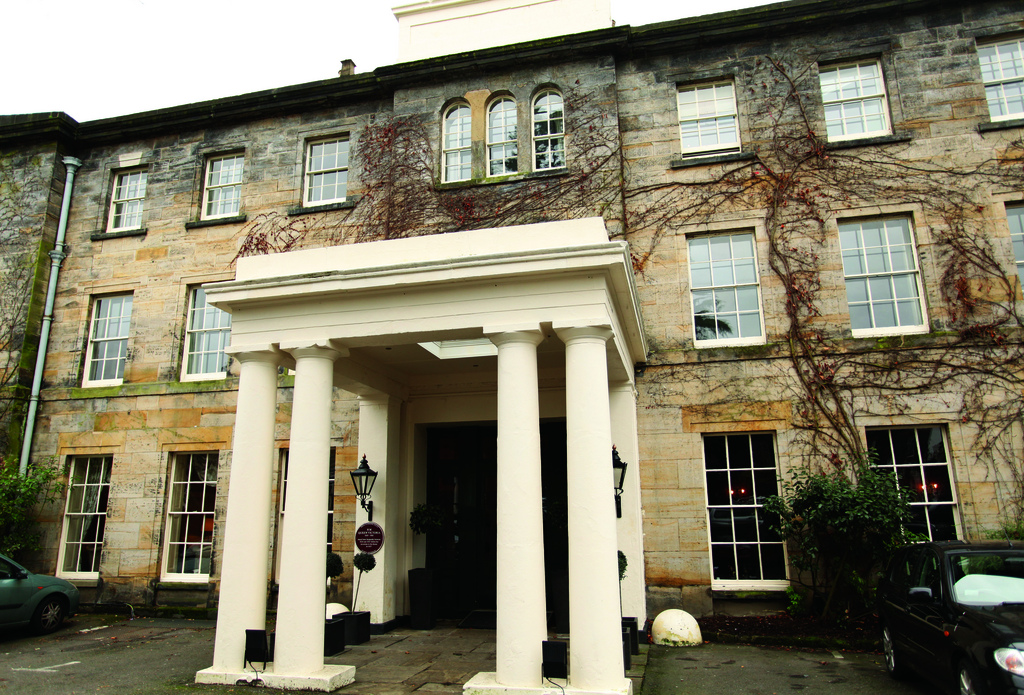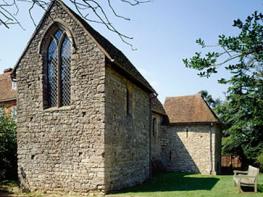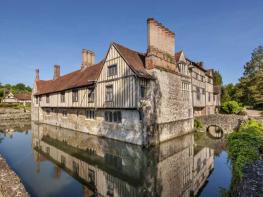The Rose and Crown is a 15th-century coaching inn situated in Tonbridge's bustling town centre.…
Hadlow's folly

5.5 miles (8.8kms)
About the walk
One feature dominates the landscape on this walk and you'll see it as soon as you arrive in the village. It's the enormous tower built in the early 19th century by local eccentric Walter Barton May as an extension to Hadlow Castle. It's not particularly decorative but it is one of the largest and most interesting follies in Britain.
The name 'folly' comes from the French word for foolishness. An appropriate term, as it's applied to eye-catching, expensive, largely useless buildings that were built to enhance the landscape. Favourite designs were classical temples and ruined castles and they were very fashionable in the 18th and early 19th centuries – a 'must-have' for wealthy landowners. The folly at Hadlow looks as if it is made of stone, but it is in fact a brick structure covered by stucco. If you look closely you can see the stucco peeling off.
As follies go, May's isn't the most unusual in Britain; that honour surely has to go to the giant Pineapple folly in Dunmore Park near Airth in Scotland. However, it is one of the most mysterious. Some people claim that May built the tower so that he could get a view of the sea – which seems unlikely from this part of Kent. Others claim that it was a copy of another tower at Fonthill Abbey in Wiltshire and was the final stage in the construction of his home, Hadlow Castle. However, the most widely believed theory is that May built it so that he could spy on his wife who was having a fling with a local farmer. His wife certainly left him after the tower was finished, so May was stuck with a reminder of her infidelity.
If you go into the churchyard you can see the elaborate mausoleum belonging to this eccentric man. He ordered it specially because he wanted to be buried sitting up, above the ground. Unsurprisingly, May's wishes weren't carried out and he was buried lying down.
Walk directions
From the centre of the village walk north beside the A26. Just past a pond take the footpath right, signed 'East Peckham'. Walk across a field and take the left-hand field-edge. Cross a stile and walk ahead across an orchard. Go through a gate and you will see Goblands Farm in front of you.
Turn left along the road, then take the footpath on the right, over a little bridge and into a field. Turn left and walk along the field-edge, then cross a tiny bridge into the next field. Go straight ahead and cross another field walking in the direction of an oast house. Cross a stile and another small bridge and walk across the next field to a stile. Continue in this direction over two more stiles, then go through a garden and onto the lane.
Turn left, cross the main road (A26) and go through the gate of Goose Green Farm. Follow the driveway, go through another gate, bear left past The Barn and turn right to follow the footpath across a field. On reaching woodland, turn left beside the trees, then take the path right through the wood. Exit the trees, keep ahead, passing to the right of poly tunnels, and follow the path up into West Peckham.
Walk across the village green to the top left-hand corner. Go through a kissing gate and follow the signs for the Greensand Way. Follow the track and go round to the right of a cottage and through a gate. Walk right round the edge of a field to a gate. At the road, go left for a few paces, then right along a wide track between fields.
Bear right at a junction of paths, then where the Wealdway goes right, turn left and walk down to the gates of Oxen Hoath. Walk past the house, cross a cattle grid and walk ahead keeping the pond on your left. Go through a gate, walk ahead along the field-edge to another gate, and then go through a third gate and on to the road.
Follow the road ahead then turn left, signposted for The Common. Just before you reach some old cottages take the lane on the right. Follow this, go through a gate and then turn left and walk along the edge of a field. Cross a stile and go through a kissing gate on to the road. Turn right and walk back into the village.
Additional information
Field-edges, woodland tracks, some road, several stiles
Pleasant views over the Weald, and lots of oast houses
Several sections where dogs can be off lead
OS Explorer 148 Maidstone & the Medway Towns, OS Explorer 136 High Weald
On-street parking in Hadlow
Court Lane, Hadlow
WALKING IN SAFETY
Read our tips to look after yourself and the environment when following this walk.
Find out more
Also in the area
About the area
Discover Kent
The White Cliffs of Dover are an English icon – the epitome of our island heritage and sense of nationhood. They also mark the point where the Kent Downs AONB, that great arc of chalk downland stretching from the Surrey Hills and sometimes known as ‘the Garden of England’, finally reaches the sea. This is a well-ordered and settled landscape, where chalk and greensand escarpments look down into the wooded Weald to the south.
Many historic parklands, including Knole Park and Sir Winston Churchill’s red-brick former home at Chartwell, are also worth visiting. Attractive settlements such as Charing, site of Archbishop Cranmer’s Tudor palace, and Chilham, with its magnificent half-timbered buildings and 17th-century castle built on a Norman site, can be found on the Pilgrim’s Way, the traditional route for Canterbury-bound pilgrims in the Middle Ages.
In the nature reserves, such as the traditionally coppiced woodlands of Denge Wood and Earley Wood, and the ancient fine chalk woodland of Yockletts Bank high on the North Downs near Ashford, it is still possible to experience the atmosphere of wilderness that must have been felt by the earliest travellers along this ancient ridgeway.
Nearby stays
Restaurants and Pubs
Nearby experiences
Recommended things to do
Why choose Rated Trips?
Your trusted guide to rated places across the UK
The best coverage
Discover more than 15,000 professionally rated places to stay, eat and visit from across the UK and Ireland.
Quality assured
Choose a place to stay safe in the knowledge that it has been expertly assessed by trained assessors.
Plan your next trip
Search by location or the type of place you're visiting to find your next ideal holiday experience.
Travel inspiration
Read our articles, city guides and recommended things to do for inspiration. We're here to help you explore the UK.

